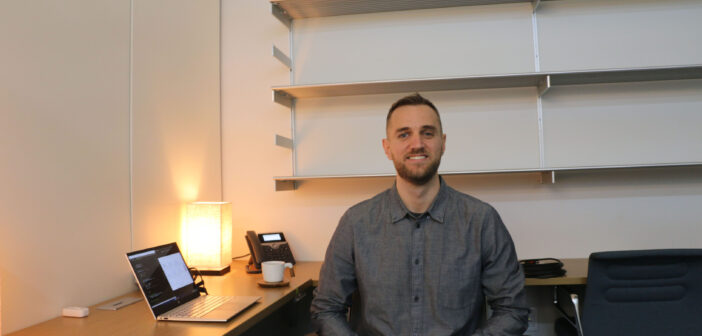Lehigh University recently entered an agreement with The Ohio State University granting upwards of $25 million over five years to develop two new superalloys for the U.S. Army Research Lab and to conduct further research on these materials.
This collaboration – known as Lightweight High Entropy Metallic Alloy Discovery (LHEAD) – aims to improve the performance of superalloys and materials processing through means such as electron microscopy, which is essentially a way to photograph specimens.
Much of the project has been made possible through Lehigh’s Nano/Human Interfaces (NHI) Presidential Initiative, which seeks to aid the research experience. The NHI includes a lab which was recently established within the new Health, Science & Technology building.
“That lab has been set up with beautiful observational capabilities, so three of the four rooms in there have ceiling-mounted cameras and microphones embedded in the ceilings,” said Kate Arrington, a lead principal investigator working on the project’s cognitive science team.
Arrington said the Ohio State connection is useful because of the complementary equipment and expertise between the universities.
“If you think about studying materials, there’s lots of kinds of information that you’d want to be able to gather about these materials, and those require different, often multimillion-dollar pieces of equipment,” Arrington said.
David Braun, ‘17G ‘20 Ph.D, a postdoctoral research fellow also working for the cognitive science team. He said the cognitive science aspect is unique to the project, since there are other initiatives throughout the country to optimize scientific interfaces, but many of them don’t prioritize the human element.
Joan Stanescu, a visiting scholar and lab manager for the NHI, explained the use of the Microsoft HoloLens2 in the LHEAD project. She said the mixed-reality device allows teams to see and walk around something in 3D, such as how cells engineer new tissue.
“It’s a big collaborative solution,” Stanescu said. “The HoloLens2 is the tool of the future.”
Dylan Staniszewski, ‘22, has been involved in the initiative since his freshman year under Martin Harmer, who is the Alcoa Foundation professor of materials science and engineering, director of the NHI Initiative and principal investigator of the LHEAD project. Over the past years, Stanizewski said there have been three applications created for the HoloLens focused on different areas: grain boundaries, nanotubes, and scaffolding.
“I think the most complex (application) is one about this collection of grains and the boundaries between them,” Staniszewski said. “There’s functionality where you can pull apart the grains and look at the different boundaries.”
Another student involved in the initiative is Jack Kellerk, ‘21 ‘22G, who began working on the NHI’s new artificial intelligence support system interface, called “Buddy.” He then joined the computational microscopy group working on the PyJEM team. Kellerk said the goal for this new team was to develop methods to expedite the control of electron microscopes through JEOL PyJEM, a Python-based application programming interface for electron microscopy.
“I highly recommend other students at Lehigh to join the NHI research team,” Kellerk said. “It has been a transformative experience for me.”






Comment policy
Comments posted to The Brown and White website are reviewed by a moderator before being approved. Incendiary speech or harassing language, including comments targeted at individuals, may be deemed unacceptable and not published. Spam and other soliciting will also be declined.
The Brown and White also reserves the right to not publish entirely anonymous comments.